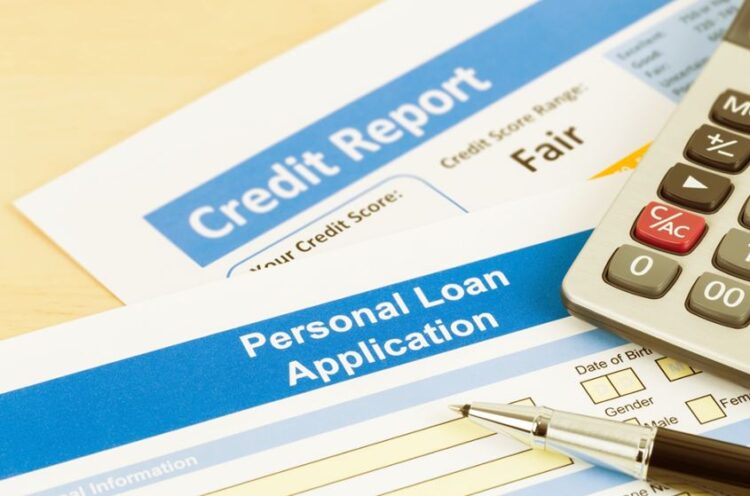People borrow money for various reasons. They do that when they don’t have enough savings to pay for things at once. Or they have some side money, but they take a loan as a more affordable and convenient option.
Many borrow money to buy expensive items they may not otherwise be able to afford. Others do that to accomplish long-term plans, such as buying a house or starting a business. They pay off the lent amount over time, which is a more acceptable option than cashing it all out at once. For that concession, they pay a specific price, i.e., interest.
The most common reason for borrowing is debt consolidation. That’s usually a better option than credit cards (see a comparison of these two financial tools here). People can also use these loans to pay off high-interest debts. Furthermore, they borrow money to pay for costly medical procedures or home repairs. If you plan to do any of these, there are a few essentials about personal loans you should know.
Loan Types
You can borrow money for various purposes, including debt consolidation, home improvements, and vacations. When you have a clear goal, loans can be a handy financial tool that can solve your financial problems fast. But before you apply, you should understand what types of loans are available.
An unsecured loan is an excellent option for people with good credit. These are usually short-term and an excellent option if you have an urgent need for money and can pay it off in a few months. These loans might have higher interest than secured ones, and the lender charges it on the amount borrowed. But there is no collateral to put up as security.
Secured loans are mainly used when the borrowers ask for higher amounts, or their credit parameters are not very good. Then they provide something as a pledge, i.e., a guarantee that they will repay the debt on time. Because of that collateral, interest rates on these loans are lower than on unsecured ones, and repayment periods are longer.
Who Can Apply?
Loans are usually given as a lump sum, and you can use that money for whatever you need. Anyone with a steady income and solid credit rating can ask for one (or a few). But many nuances can affect which loan you can apply for, how much money you can get, and under which conditions.
As explained on https://www.refinansiere.net/refinansiering-av-forbrukslån/, you should check your credit score before applying. If it’s low, your application will probably be denied. So you should take steps to raise it before filling out the application. Getting a personal loan is easy if you’ve established yourself as an applicant with low credit risk.
Also, look for errors in your credit report. These don’t have to be your fault but can hinder your application. So if you have bad credit but don’t know why, you should check with a credit bureau for possible mishaps in your report.
How to Get a Loan
First and foremost, decide how much you need. Defaulting on repayments will ruin your credit, so make sure you choose the deal that meets your needs and financial abilities. You should also calculate how much you can afford to pay back in monthly installments.
Most lenders have specific lending conditions for applicants. For example, they’ll look at your credit score, payment history, and debt-to-income ratio. Also, they ask for documentation proving you have a steady income and a regular job. Other requirements may vary depending on the lender and your state laws.
Lenders need to check these parameters to ensure you can pay off the loan. For example, a lower credit score can hurt your chances of qualifying. On the other hand, higher income, despite higher DTI, can help you get more money. Also, it’s possible to apply with a cosigner who has better credit than you.
After checking your credit score, you need to gather the documents and information required by your lender. That way, you can speed up the entire procedure. Once you have the documents you need, you can begin the application process.
How to Choose a Lender
The lender’s choice can be of great importance for approval. If your credit score is not perfect, you should be particularly careful. Lenders’ interest rates and lending requirements can vary, so always shop around for the best deal. Also, check out their experience and reputation with the Better Business Bureau.
Personal loans are great for short-term financing, but be clear about the interest rates you will pay. Discuss whether these are fixed or variable and how lenders determine them. If you know your credit rating is not perfect, you can’t expect low interest or a short-term repayment period. But if it’s high, you can negotiate loan terms.
Some companies will borrow money even though your score is below 650 or DT is higher than 40%. But their terms might be quite strict. So if you’re not in an emergency, avoid this option. Instead, work on lowering your DTI and boosting your credit score.
Also, make sure there’re no hidden costs. For example, some banks and other lending companies charge a sign-up fee or origination fee. Also, they could set prepayment penalties, which you pay in case of early debt repayment. In any case, these should be stated in your contract.
Personal Loan Pros and Cons
Borrowing money from established lenders is a great way to make a major purchase or pay some high unexpected costs without compromising your financial stability. Its primary advantage is paying off debt in a manageable way. For example, you can set the timing of loan installments to match your payday and cash flow.
Also, you can consolidate all your financial obligations into a single one. So rather than juggling several installments, you can pay them off with a single one. Also, you can consolidate multiple high-interest credit cards. But make sure to read the terms and conditions carefully before signing anything.
While personal loans are very convenient, they come with many drawbacks, which you should consider before applying for one. Aside from the interest rate, personal loans also include repayment default risks. They can be a great way to solve a temporary financial problem, but they may not be the best option if your credit is not up to the mark.
Preapproval
Using a personal loan eligibility calculator can help you determine whether you qualify. This way, you can better plan your finances and increase your chances of approval. But remember that this preapproval is not the same as approval. It just shows that your chances for approval are high.
You should never borrow money from a lender that promises you 100% approval. If they are offering you money before approving you, be suspicious. No one gives money just like that, especially if your credit score is not perfect or your income is lower than medial. There must be some catch that could cost you an arm and a leg.
What after Application Rejection

Rejecting a loan application is possible if you don’t meet the lender’s requirements. But it’s not the end of the world nor the end of your search for extra money. If you’ve been turned down for a personal loan, you can do several things to improve your chances of getting approved.
Among them is fixing your credit report. You can start by clearing up any negative items on it. You can also improve your debt-to-income ratio by paying off high-interest debt. Keep in mind that these processes will take some time. You can check this source for more tips on how to improve your credit score and general finances before re-applying.
You can also think about getting a cosigner, who must have a good credit score and stable income. Providing collateral is another option that most lenders will accept. It can help you secure a loan, but it also increases the risk of repossession if you default on repayment. So, make sure you can meet your financial obligations before getting a secured loan.
Personal loans are handy financial tools that can serve you a good purpose if you know how to manage them without compromising your financial stability. Otherwise, they can get you in a vicious circle of debts and hit your credit rating hard. So always think twice before borrowing money from lenders and do that only when you have no other options.






















